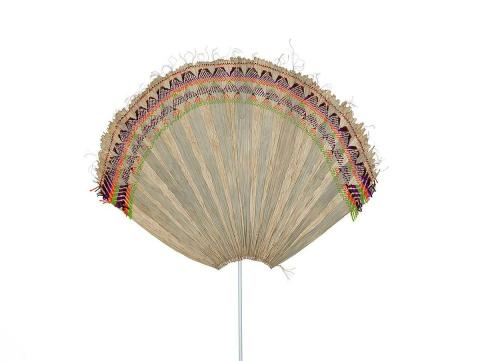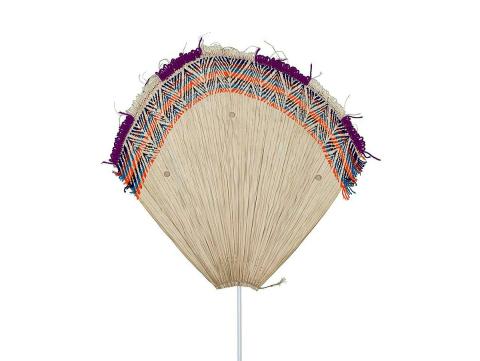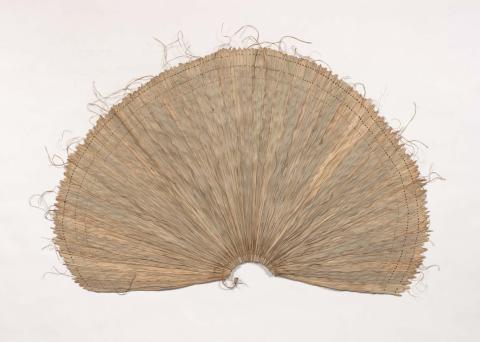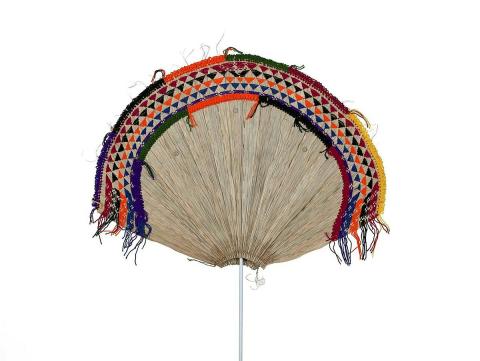Aniona and Miriona's Biruku
Fine and paper-like, long green leaves of black palm are stitched side by side with bush vine string to create the fan-shaped Biruko carried by women in Central Bougainville. For over 70 years, Adelaide Mekea Aniona has been stitching these delicate textiles, which she says are ‘a sign of a woman’ — when you carry a Biruko under your arm, you have completed the seclusion that accompanies your first menstruation.
The Biruko created by Aniona and her fellow clanswoman Helen Dusimoi Miriona are exchanged between kin and clan members as expressions of reciprocity, love and attachment. While firmly located in the realm of women’s lives, Biruko can also be used in interclan exchanges, as well as ceremonial occasions marking rites of passage, such as marriage and coming of age. They are also used by women as dance ornaments, their unique fan shape and brightly embroidered edge accentuating dancers’ movements. Aniona has danced with Biruko often, but expresses sadness that dancing is one of the only occasions for which Central Bougainville women now carry Biruko. Store-bought items have largely replaced the Biruko, and the Nasioi people’s gardens, once laden with natural materials, were destroyed, along with Miriona’s childhood village, when Rio Tinto began excavating the Panguna copper mine in 1969. The land is saturated with memories of the civil war that ensued, and the horror and loss that it brought.
For Adelaide Mekea Aniona and Helen Dusimoi Miriona, stitching Biruko is now even more important. Their practice is a statement of the ongoing strength and resilience of the Nasioi people and their connections to land.
Connected objects

Biruko 2018
- ANIONA, Adelaide Mekea - Creator

Biruko 2018
- ANIONA, Adelaide Mekea - Creator

Biruko 2018
- ANIONA, Adelaide Mekea - Creator

Biruko 2018
- ANIONA, Adelaide Mekea - Creator

Biruko 2018
- ANIONA, Adelaide Mekea - Creator

Biruko 2018
- ANIONA, Adelaide Mekea - Creator

Biruko 2018
- ANIONA, Adelaide Mekea - Creator

Biruko 2018
- ANIONA, Adelaide Mekea - Creator

Biruko 2018
- ANIONA, Adelaide Mekea - Creator

Biruko 2018
- ANIONA, Adelaide Mekea - Creator

Biruko 2018
- MIRIONA, Helen Dusimoi - Creator

Biruko 2018
- MIRIONA, Helen Dusimoi - Creator

Biruko 2018
- MIRIONA, Helen Dusimoi - Creator

Biruko 2018
- MIRIONA, Helen Dusimoi - Creator

Biruko 2018
- MIRIONA, Helen Dusimoi - Creator
Metadata, copyright and sharing information
About this story
- Subject


